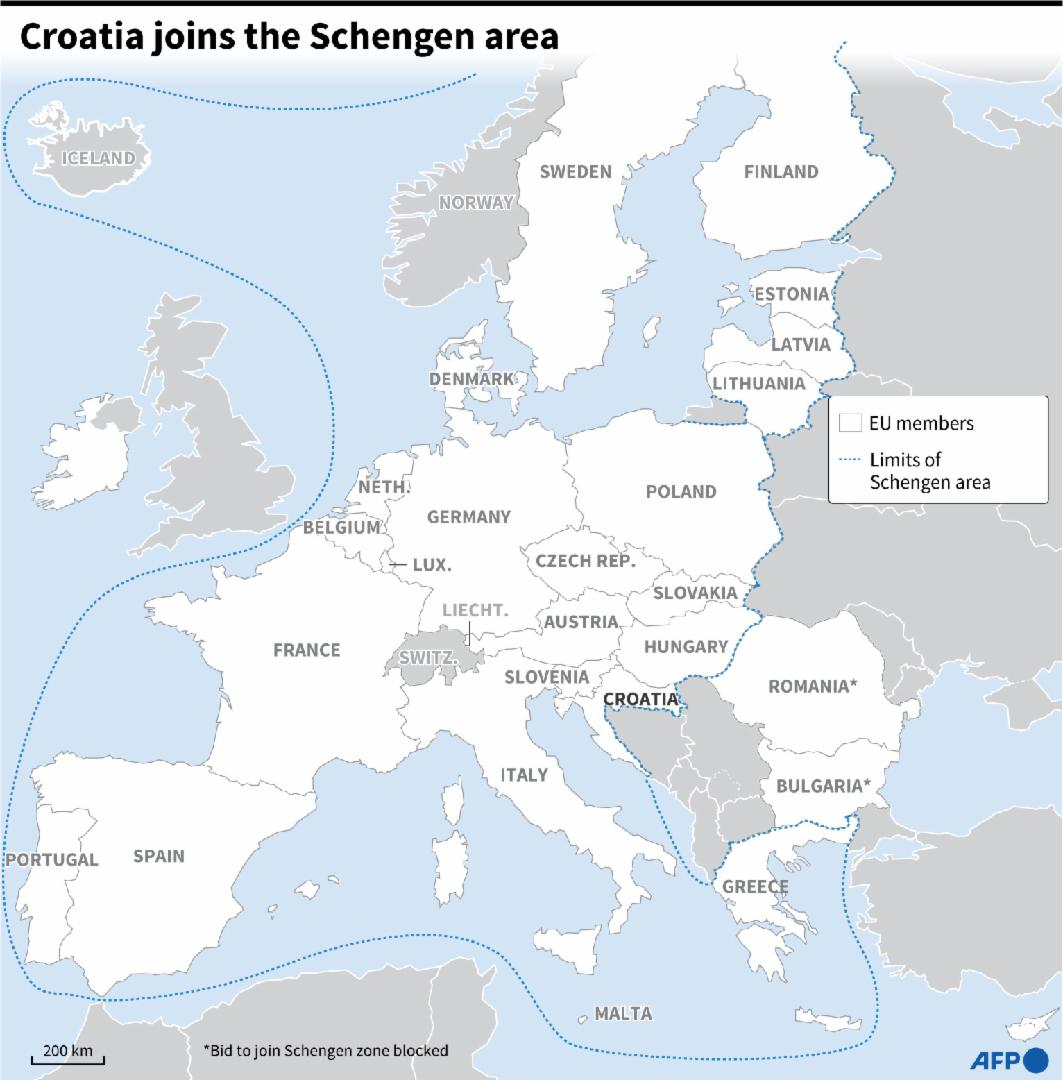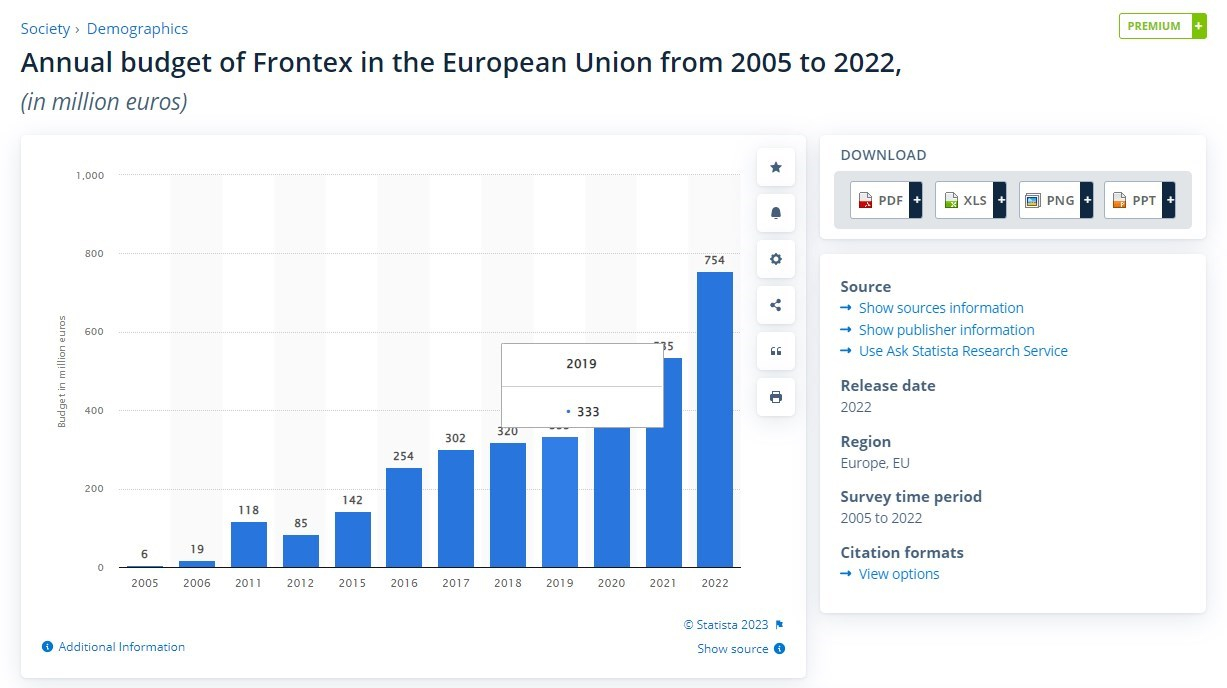Online articles and social media posts widely shared in Greek at the end of January 2023 claimed the EU border agency Frontex had warned that 330,000 migrants would enter Europe over 2023 after the same number had arrived the previous year. These posts are wrong. The agency said in a news release that it had counted 330,000 irregular entries into the EU over the 2022. It made no projections for 2023. Frontex’s figures include people who cross borders several times and so are counted several times, which has caused confusion before. The International Organization for Migration (IOM) estimates 188,000 people entered Europe illegally in 2022, which researchers say is a more reliable figure.
Posts such as this one shared on Facebook in Greek on January 14, 2023, say: “Get ready – Frontex: 330,000 Afghans, Algerians, Moroccans, Syrians and Tunisians will arrive.” They share a screenshot of an article from the ProNews site which says Frontex “warns that in 2023 the illegal entry of foreigners will reach 330,000.” Similar articles were published online here as well as on Facebook here and Twitter here.
Another version claimed that Frontex had said that 330,000 people entered the EU illegally in 2022. It was shared on Facebook and online in Greek and also in French.
The figures used in the claims are a distortion of a Frontex news release published on its website on January 13, 2023. The statement says there were 330,000 “irregular border crossings” over 2022, but gives no figures for expected arrivals for 2023. The agency told AFP that “irregular crossings” includes people who crossed the border several times.

Individuals vs crossings
The Frontex news release is entitled: “EU’s external borders in 2022: Number of irregular border crossings highest since 2016.”
“In 2022, around 330,000 irregular border crossings were detected at EU’s external border, according to preliminary calculations. This is the highest number since 2016 and an increase of 64% from the previous year,” it says.
A note at the end of the statement adds: “The preliminary data presented in this statement refer to the number of detections of irregular border-crossing at the external borders of the European Union. The same person may cross the border several times in different locations at the external border.”
There is no reference to crossings for 2023. “We haven’t made any predictions for 2023 regarding such number of illegal border crossings,” a Frontex spokeswoman told AFP in an email on January 23. The statistics on illegal borders crossings in 2022 was based on data from national authorities for that year, she wrote.
For a border crossing to be counted, the agency says that “the person must actually cross the external border and enter the European Union”. The agency says it records each time a person is detected by the authorities but not apprehended, as well as each time a person is stopped and sent back across the border.
Repeated crossings frequent
It is not unusual for a person to cross the border several times in an attempt to enter the EU, researcher and migration specialist Thomas Lacroix at France’s National Centre for Scientific Research told AFP. “Accounts of migrants who have tried five, 10, 20 times are extremely frequent,” he said on January 18, referring in particular to research on the border between Serbia and Croatia.
Similarly, a person may cross the EU’s borders several times but at different entry points. This is notably the case for migrants entering the EU through Greece from Turkey and then exiting the EU through the Balkans before entering again through Croatia or Hungary.

IOM figures more reliable for real irregular arrivals
Statistics from other sources can help to give context to the figures put out by Frontex. The IOM, the United Nations agency in charge of migration, counts the number of illegal arrivals on European territory each year via its Displacement Tracking Matrix platform.
In an email to AFP on January 18, the IOM said it had counted “187,993 migrants and refugees who entered Europe illegally” in 2022. The figure is drawn from its own field data, information from national authorities and media reports.
This represents an increase of 24 percent compared to 2021, which is less than the 64 percent calculated by Frontex. “This figure is much more reliable in terms of actual arrivals,” says Lacroix.
The IOM — whose figures are more stable over time than those of Frontex — says it tries to avoid duplication by, for example, not counting people travelling in the Balkans as it assumes that most are already included in the arrival figures for either Greece, Bulgaria or Cyprus. However, “as the same person may cross multiple land borders of EU and non-EU countries while moving in the region, there is no way to avoid double counting,” it told AFP.
The IOM added on January 19 that the rise in figures of irregular entries in 2022 may be attributed in part to the relaxing of restrictions on border crossings imposed during the Covid-19 pandemic. However, the “factors behind this are many and complex”, it said.
It noted that “the overall arrival numbers are in the same range as 2017-2019, and well below the arrivals of 2015-2016,” the height of the migration crisis. Many of these irregular entries may also be refugees who can legally apply for asylum in the European Union, the IOM said.
Frontex figures and their limitations
It is not the first time that Frontex’s figures have caused confusion. In October 2022 French newspaper Libération checked an article by French radio station Europe 1 which claimed that 228,000 people crossed the European border illegally over the first nine months of that year. Again, this figure pertained to crossings, not individuals.
At the time Désinfox Migrations, an association that aims to dispel false and misleading information around migration, warned on Twitter about this misinterpretation of Frontex figures and had called for these figures to be “put into perspective”.
“Frontex figures must be taken with caution,” Tania Racho, a researcher and associate at Paris-Saclay University in European law and consultant for the Désinfox Migrations initiative, told AFP on January 17. Frontex’s figures can be “misleading” and “do not really allow us to know how many people have crossed the borders”, she said.
“These are not independent data,” Virginie Guiraudon, director of research at the CNRS at Sciences Po Paris, told AFP on January 17. “Frontex is not Eurostat,”she said, referring to the European Commission’s department responsible for statistical information.
Some of the specialists interviewed also cautioned against reading too much into the 64 percent increase announced by Frontex. “To say that the figures have risen sharply is a hasty interpretation that needs to be checked,” said Lacroix. “Frontex publishes these figures to justify the increase of their own budget. It’s useful to them both in justifying past increases and in asking for future ones.”
The agency’s budget, which has been increasing almost constantly since its launch in 2005, has reached €754 million in 2022, more than double the amount in 2020 (€364 million).

In its statement on the jump in figures for 2022, Frontex recalled its role in protecting Europe’s borders. “These events, along with the steadily increasing number of irregular crossings, demonstrate the need for strong and effective European Border and Coast Guard, with Frontex as strong supporter of Member States,” it said.
Increase in detection capabilities
Lacroix and Racho said the rise in numbers would also be partly explained by a strong increase in Frontex’s human and budgetary resources, for example in more extensive use of drones and surveillance cameras to detect irregular crossings.
Guiraudon added, however, that Frontex data includes information provided by government authorities. “The increase in Frontex’s budget is very important, but the Frontex border guards are only 1,500 people,” she said. The increase in border-monitoring resources may explain an increase in detections in the medium term, but not from one year to the next, she said.
“This does not mean that these figures are meaningless and do not show trends,” Guiraudon said, while calling — as did other researchers interviewed — for the utmost caution with regard to the Frontex figures.







